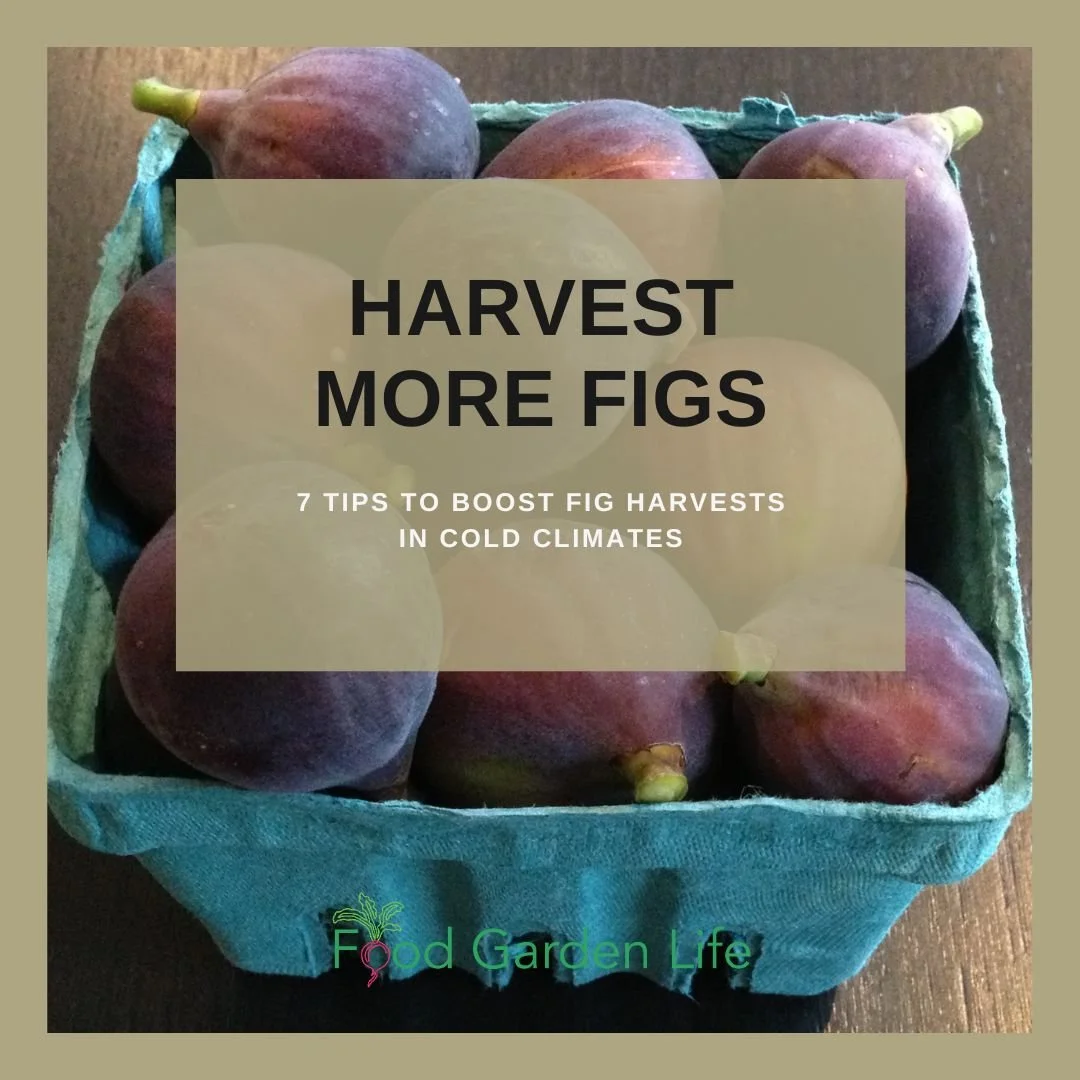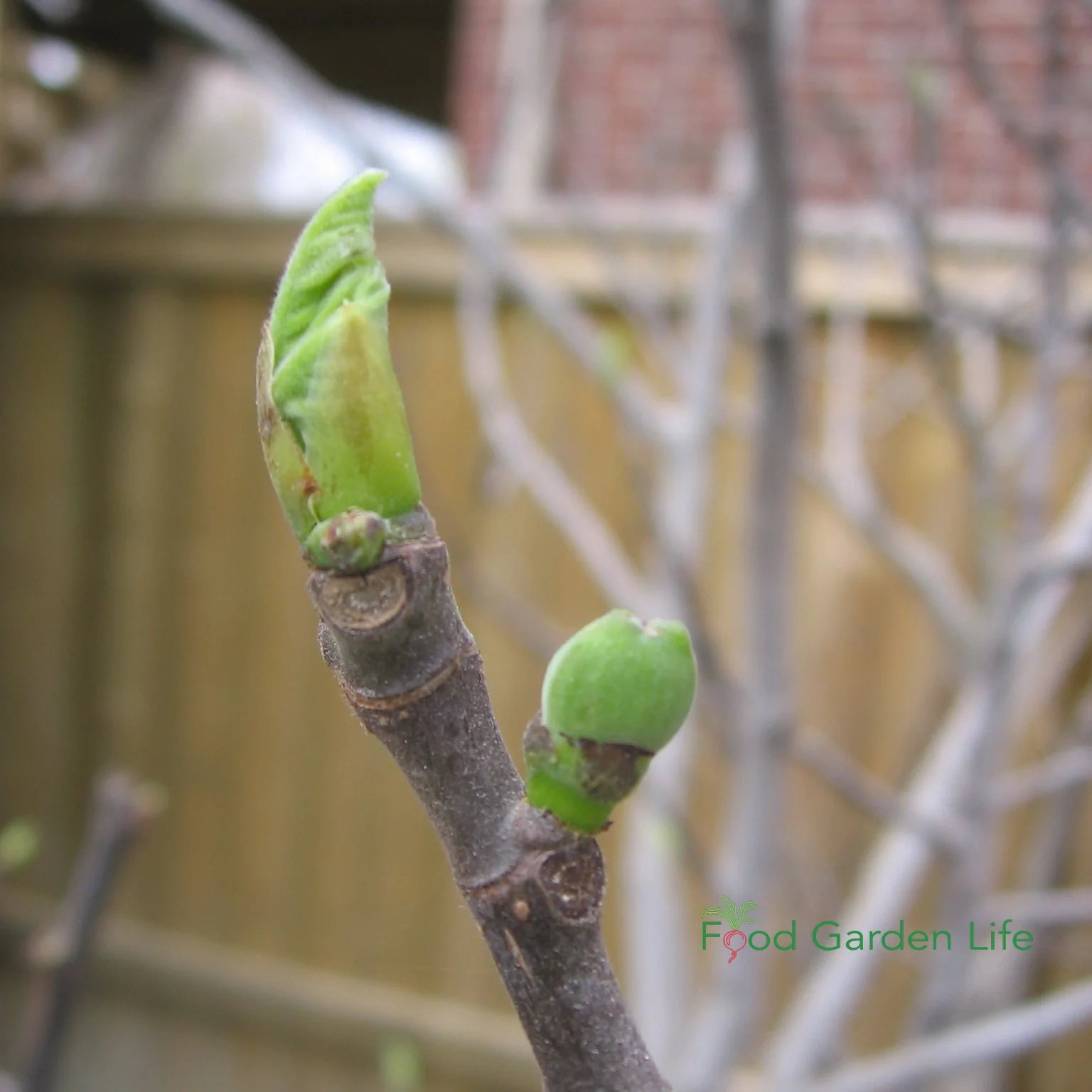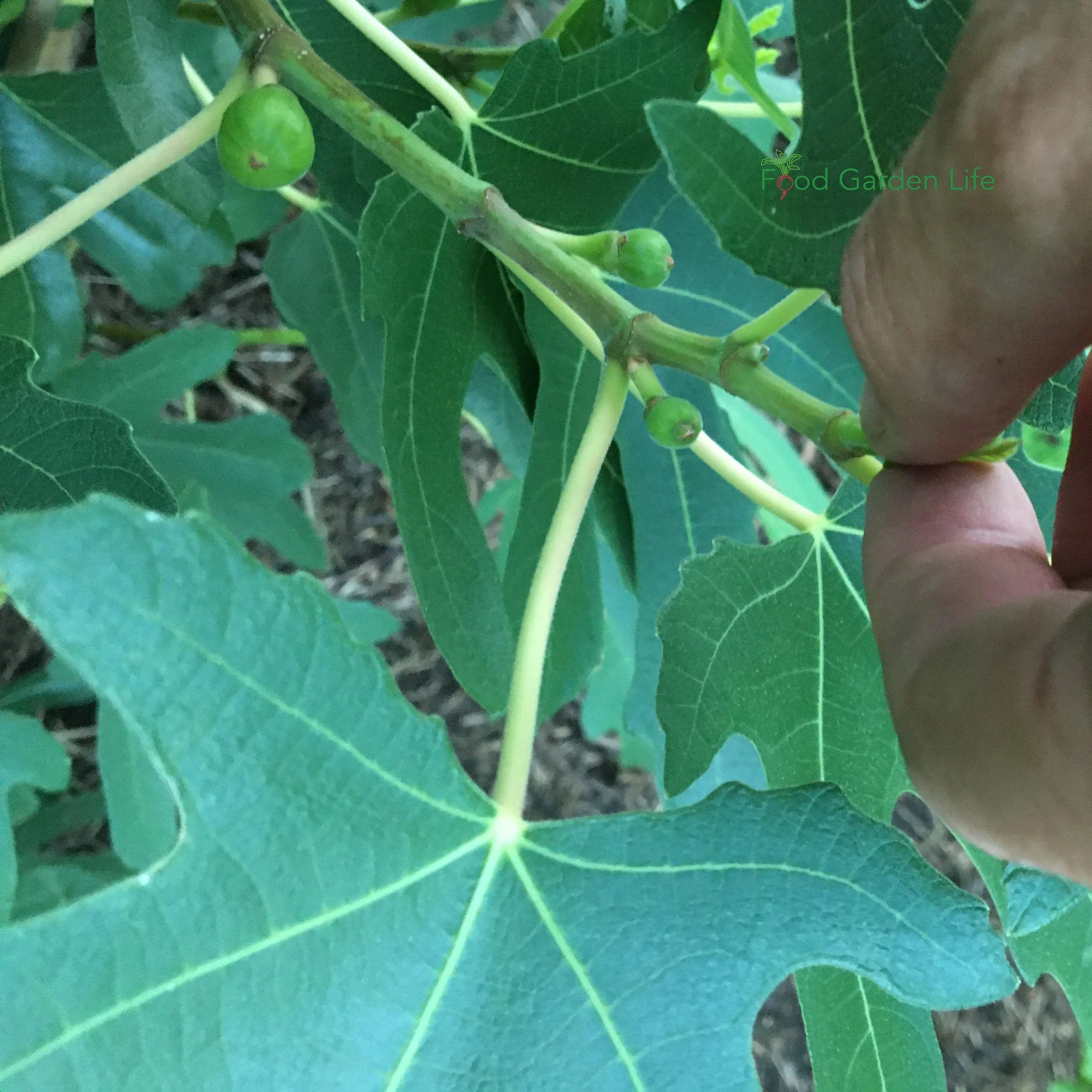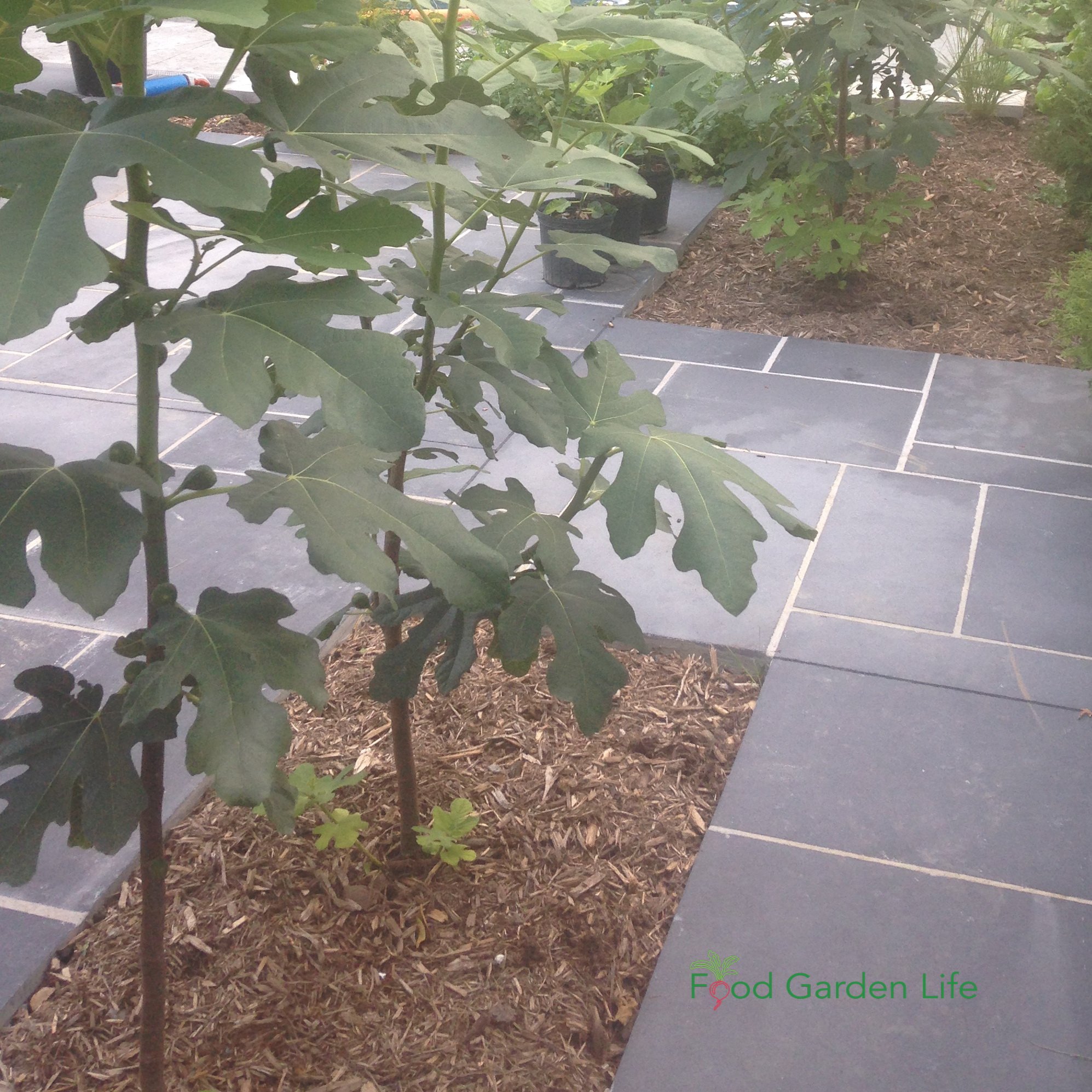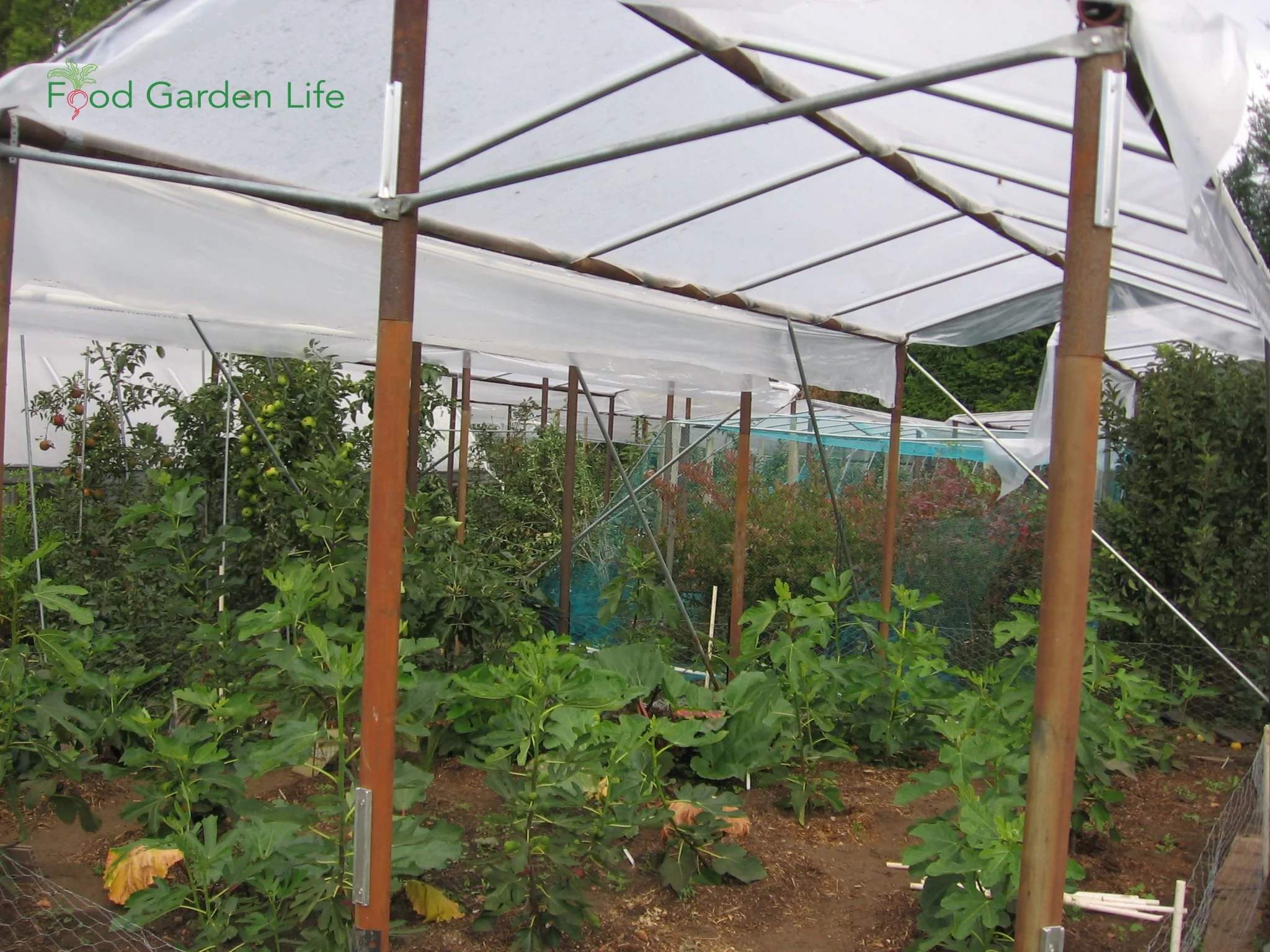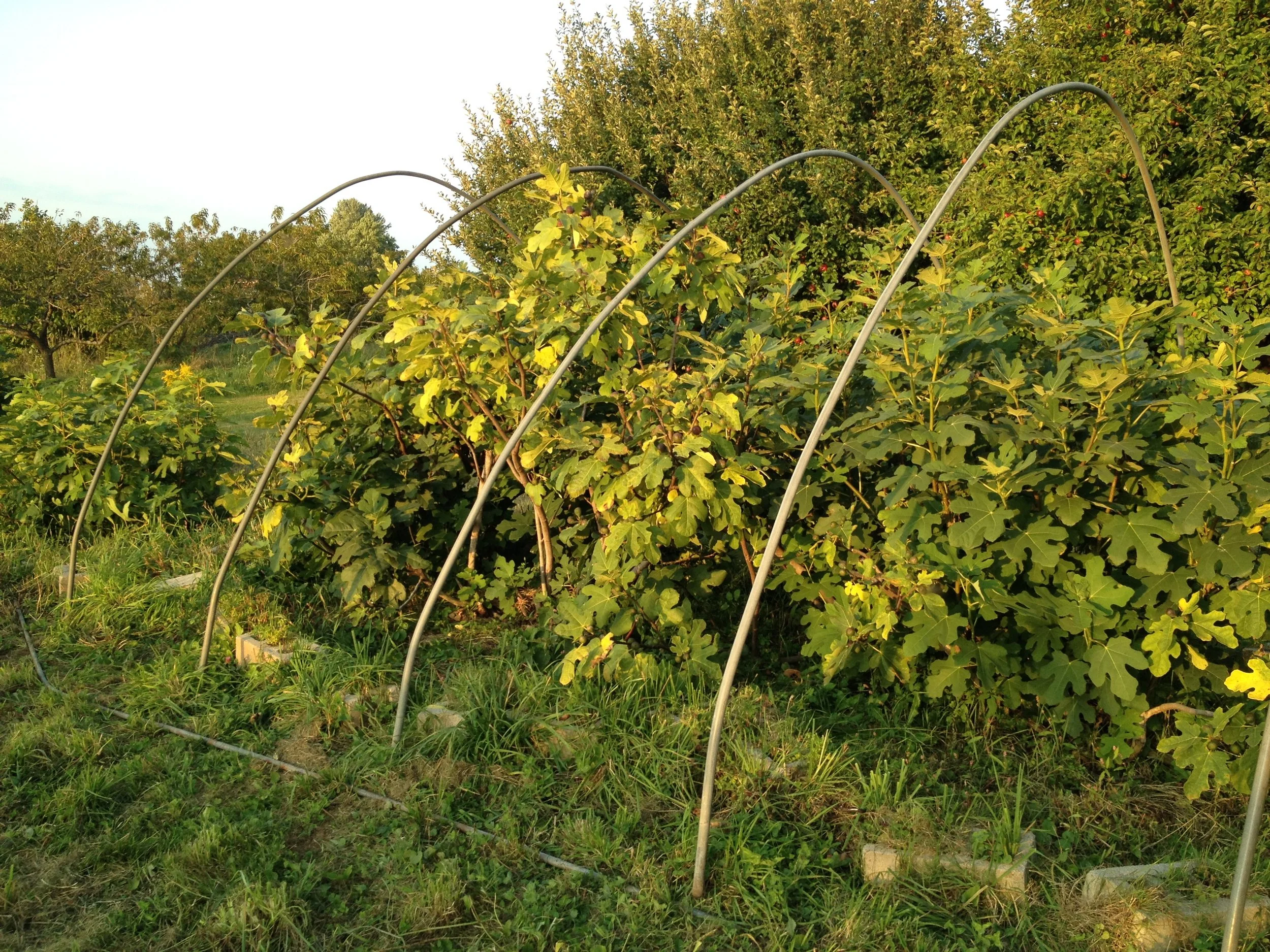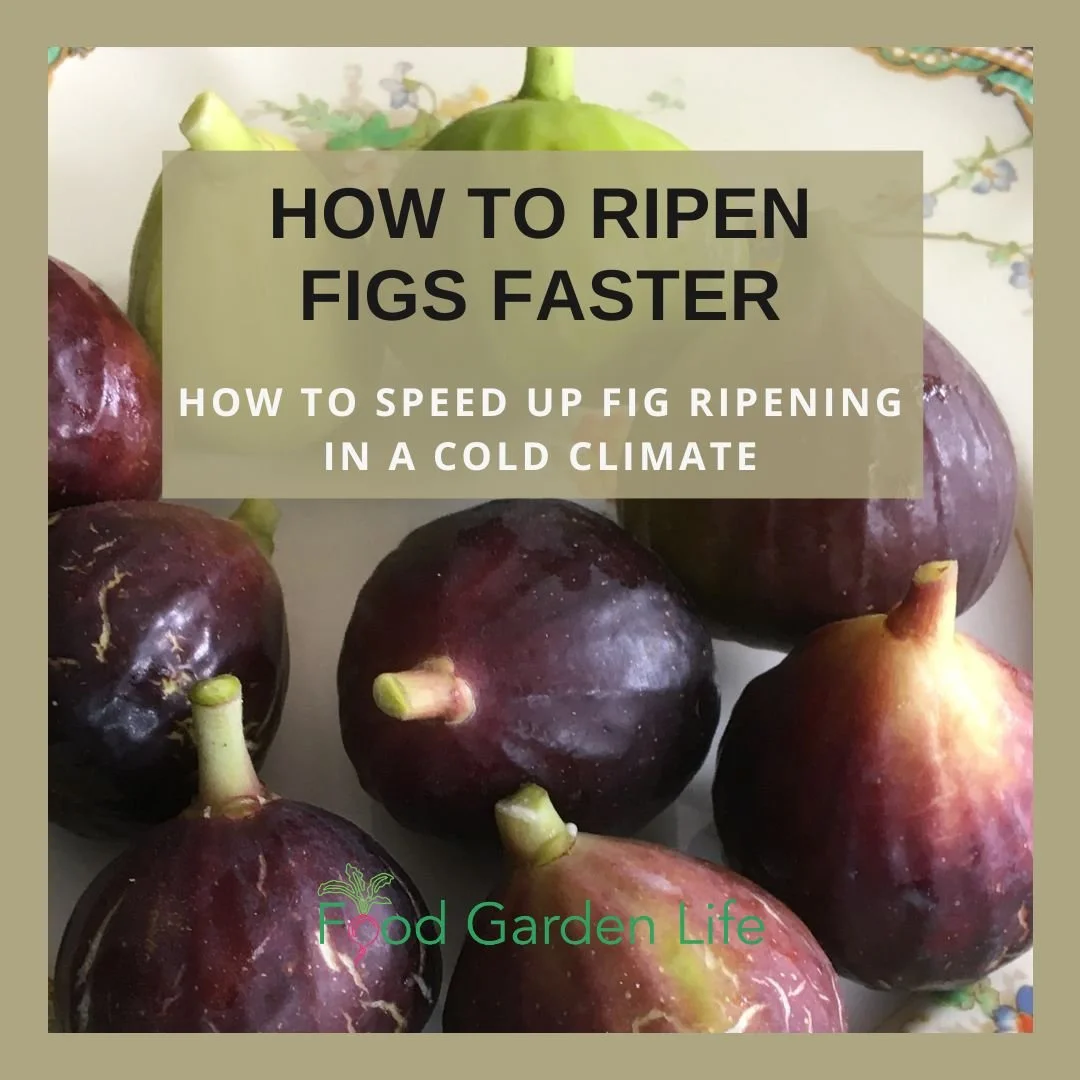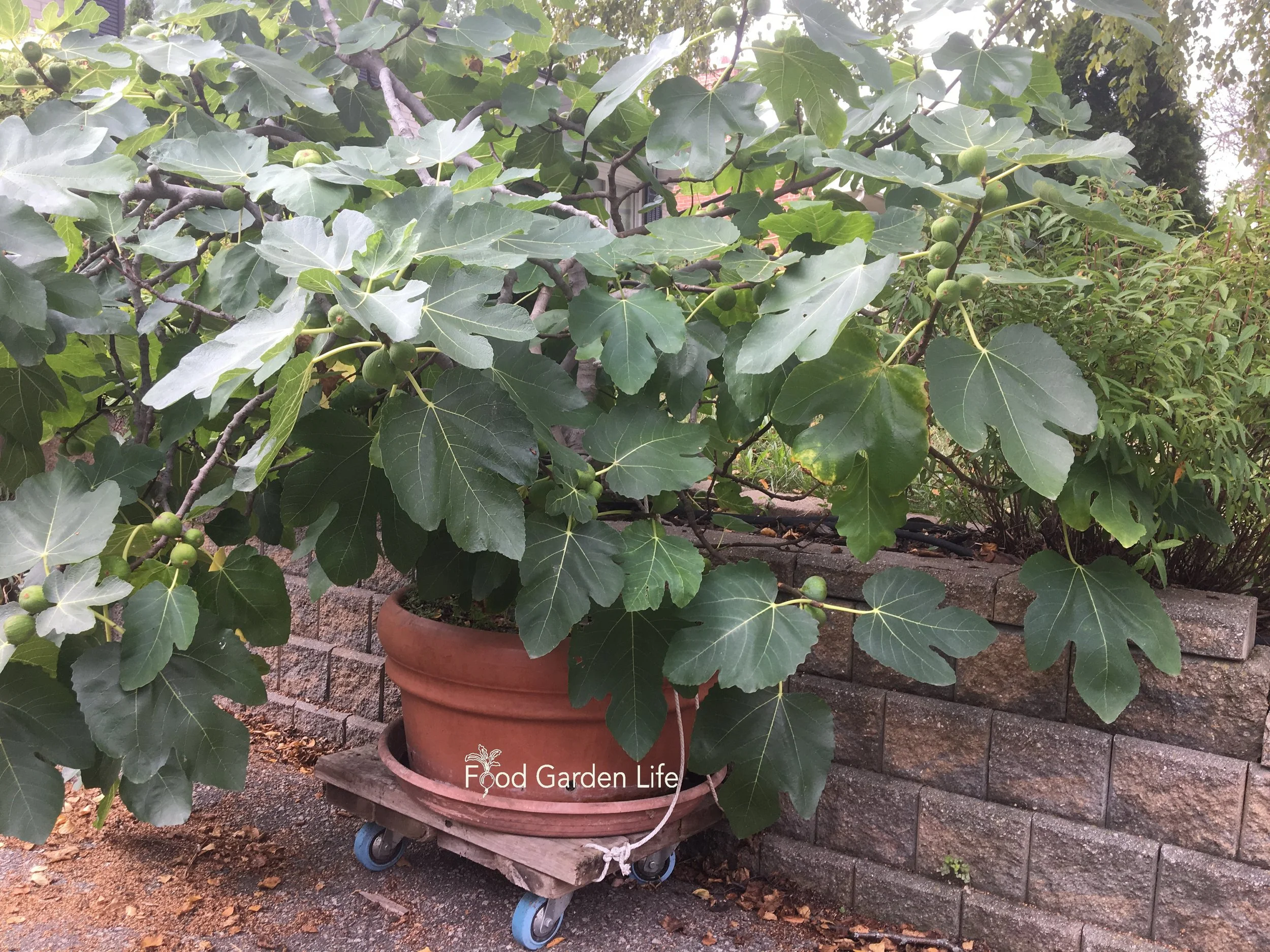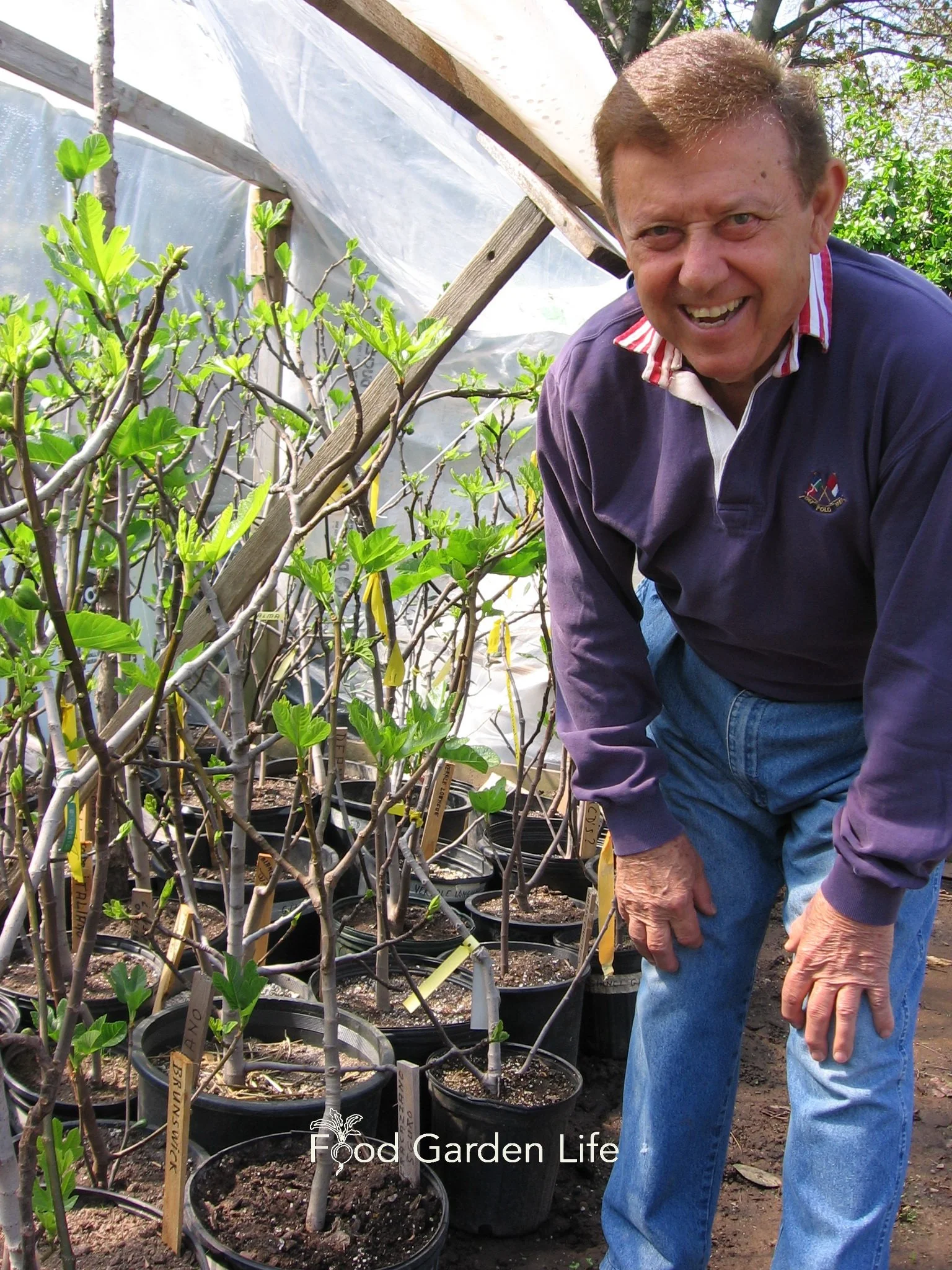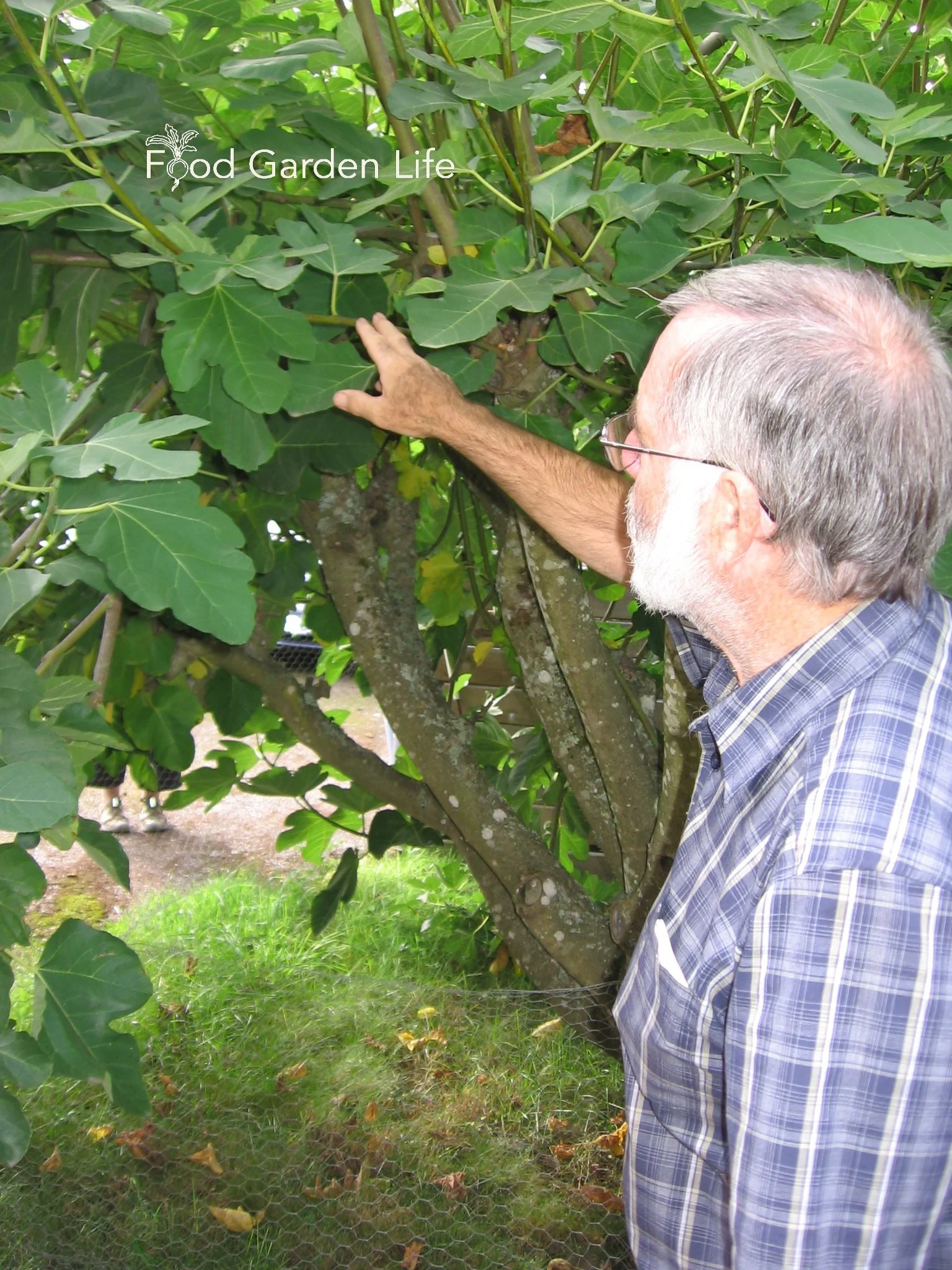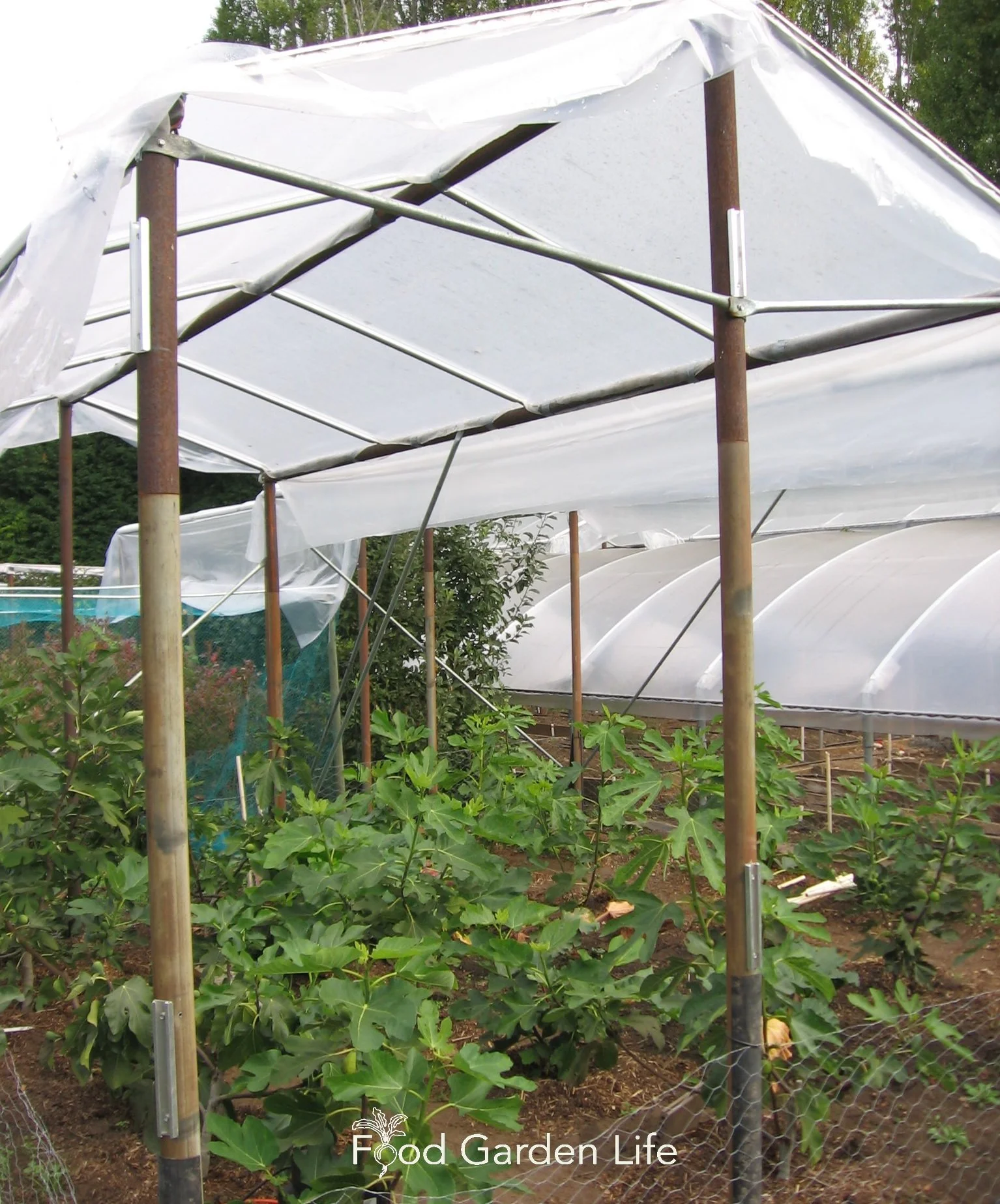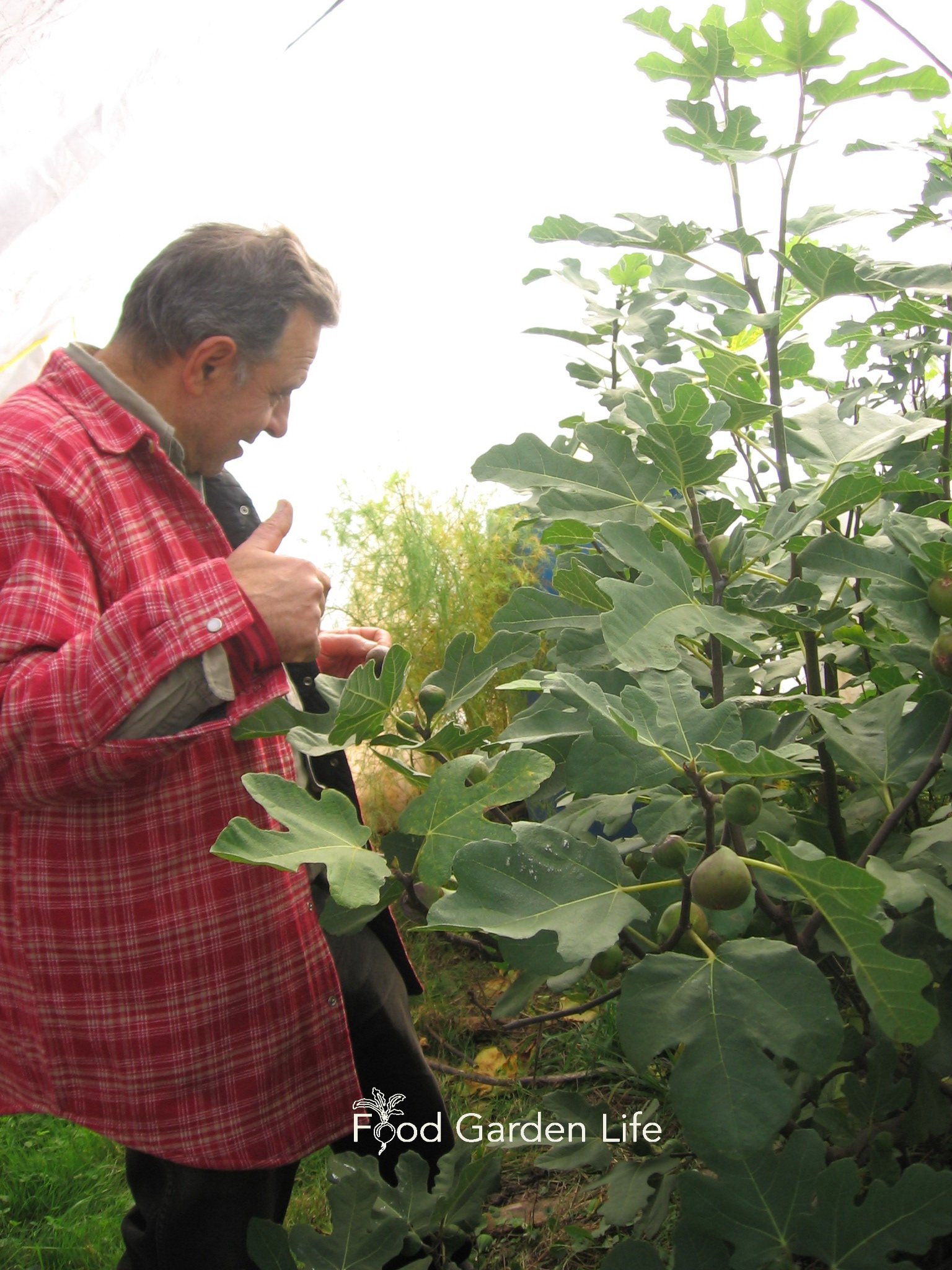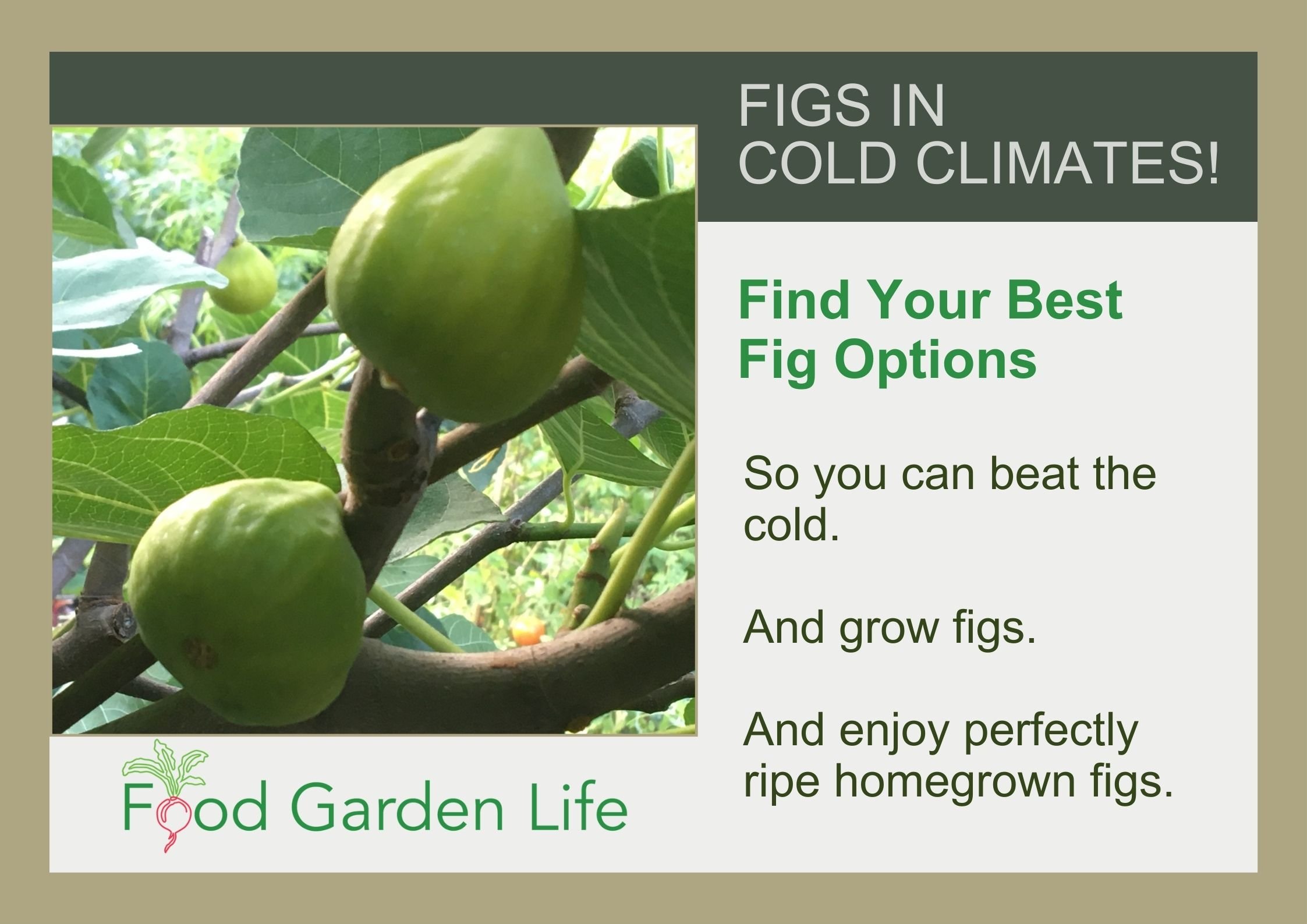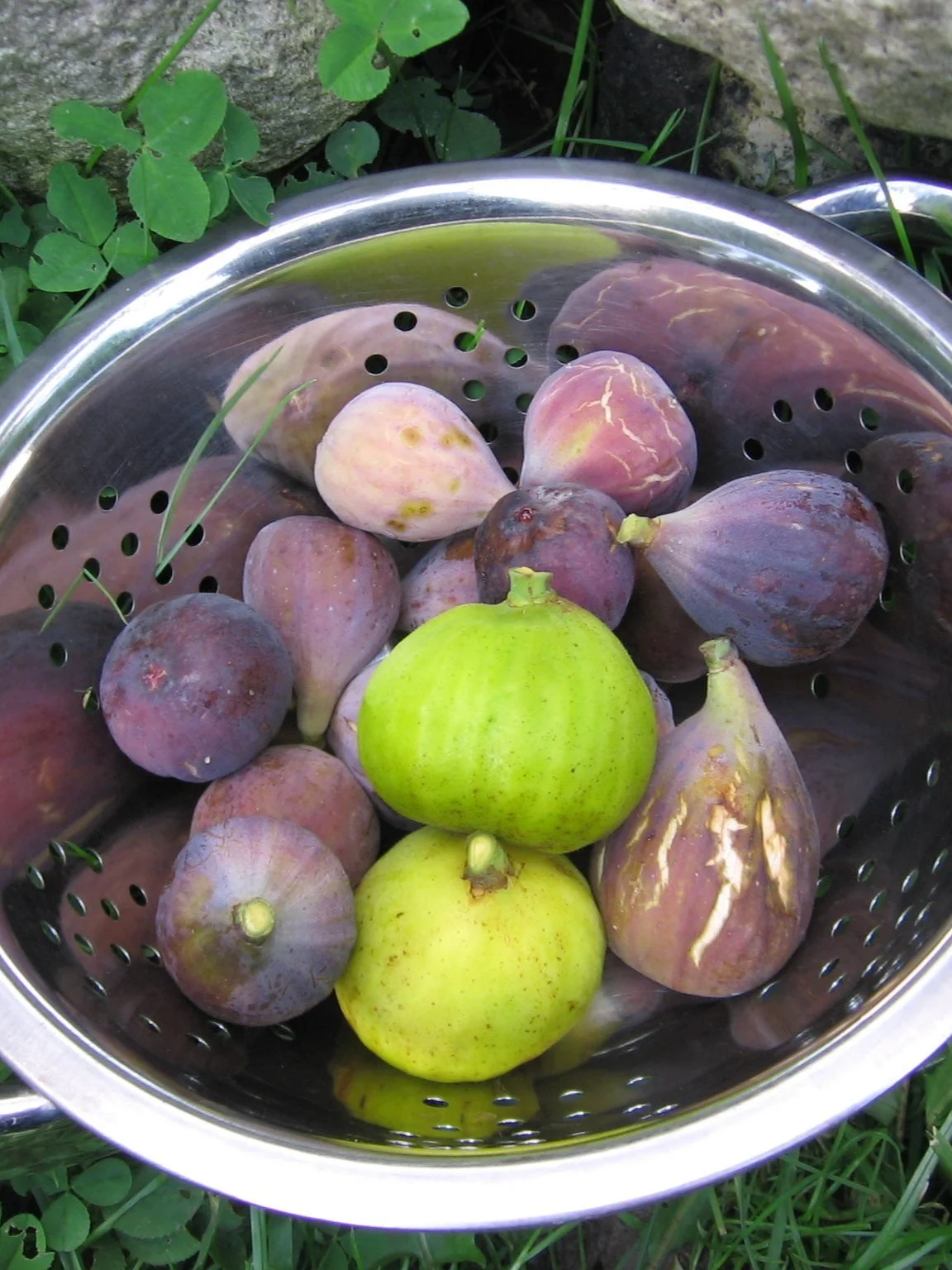7 Tips to Boost Fig Tree Harvests in Cold Climates
7 tips to boost fig tree harvests in cold climates. Fig tree cold hardiness is one way to grow more figs. Here are 6 other things that will boost your fig harvest.
By Steven Biggs
Boost Your Harvest with Growing Methods, Location, and Fig Tree Cold Hardiness
Fig tree cold hardiness is just one part of getting a good fig harvest in cold climates.
Here are the things to think about to harvest more ripe figs if you’re gardening where fig-growing is borderline—or where fig trees are not hardy and need winter protection.
7 Tips to Boost Your Cold-Climate Fig Harvest
Grow Cold-Hardy Fig Varieties
These fig varieties are the survivors—the fig trees that come through more cold that other fig varieties can take without dieback. Unscathed.
Look for cold-hardy fig varieties.
Some fig varieties simply take more cold than others. For example, a well-known hardy fig variety is ‘Chicago Hardy.’
(It’s the same with most plants, actually. You’ll find apples much farther north than you might expect—because some varieties are very cold-tolerant.)
It becomes even less important if you’re growing potted fits that are stored somewhere protected.
Along with the cold hardiness of a variety, there are other things that affect how much cold a fig tree can take. Here’s more on fig tree cold hardiness.
Find out some of the top cold-hardy fig varieties for cold climates.
2. Choose Fig Varieties that Ripen Early
A breba fig, growing early in the season on wood from the previous season. Breba figs ripen earlier than the “main crop” figs in late summer.
If you’re in a cold zone, chances are that the limiting factor to fig ripening is the season length. There’s never enough time for figs to ripen (or, at least, not as many figs as you want.)
So pick a variety that ripens early.
Here are 2 types of figs to consider as you look for early-ripening fig varieties:
Breba Figs
If you’re in a cold climate, make sure you have a fig variety that produces “breba” figs – the figs that form mid-summer on growth from the previous season.
They’re the earliest. Period.
Find out some of the top breba fig varieties for cold climates.
Early Ripening Main Crop Figs
Look for fig varieties with a main crop that ripens early.
The “main crop” figs are the ones that form on wood from the current season. My favourite is Ronde de Bordeaux.
Find out some of the top early-ripening fig varieties for cold climates.
Get Your Fig Trees Through Winter
And eat fresh homegrown figs!
3. Grow a Fig Bush
A well-branched bush usually has more branches than a tree. And more branches means more figs.
Plus, if you’re in a cold climate, more branches is like having fig insurance…so if some die off over the winter, you’re more likely to have a few left to give you figs.
4. Wake up Fig Trees Early
Wake up fig trees early. Here are fig trees getting an early start with tomato seedlings, in early spring.
Because season length is a limiting factor to fruit ripening, waking up fig trees early in the spring can give you more figs in the fall. You’re just giving them a longer growing season.
The challenge for a lot of cold-climate fig growers is finding a spot that’s protected, because once your fig trees come out of dormancy, the new growth is damaged by cold winds and frost.
One solutions is to create a temporary shelter for an early wake-up.
Or, if you are growing potted figs, bring them outside on warm days to help them wake up. But put them back into a protected spot when it gets cold. (I call this the “fig shuffle.”
5. Pinch Fig Shoot Tips
Pinch shoot tips after 4 or 5 main-crop figs have formed.
The new branches on your fig tree keep getting longer all summer, with more and more little main-crop figs. But, realistically, only the first few main crop figs will ripen in a cold climate.
So after 4 or 5 little main crop figs are growing on a branch, pinch the shoot tip to slow down branch growth.
This pinching will favour fruit development.
6. Turn up the Heat
Paving materials take up heat by day and release it as temperatures cool in the evening, giving extra heat to ripen figs.
Choose a warm location. More heat means more figs ripening in your short season.
If you’re growing potted figs, place them somewhere warm:
On a dark-coloured driveway or patio
Next to a brick wall that captures and releases heat from sunlight
When planting fig trees in the ground, look for somewhere warm:
A south-facing exposure next to a wall
Next to a sunny driveway
You can also provide more heat with a simple structure such as a greenhouse with no walls. (Here’s how one fig grower in the cool-summered Pacific Northwest boosts summer heat to ripen main-crop figs.)
Ripening main-crop figs in the Pacific Northwest, where summers are cool, with the help of a greenhouse that has no walls. This greenhouse is not for winter protection—just to pump up the temperature in the summer.
7. Extend the Fall Fig-Ripening Window
Here’s what my friend Joe does for some of his figs: As cool weather arrives in the fall, he covers the hoops with clear plastic to extend the fig harvest for a few weeks.
If you want to ripen a few extra figs before winter, delay dormancy and keep those ripe figs coming!
You can delay dormancy by keeping your plants warm during cold spells. Cover in-ground fig plants with a temporary structure, or move potted plants into a protected location.
Pin this post!
More Information About Growing Figs
Books About Growing Figs in Cold Climates
Fig Masterclass
Get Your Fig Trees Through Winter
And eat fresh homegrown figs!
Olives: Another Exotic Crop for Cold Climates
How to Ripen Figs Faster in a Cold Climate
Got Unripe Figs? Find out How to Ripen Figs Faster in a Cold Climate
By Steven Biggs
Why Won’t My Figs Ripen?
Lots of Figs...Unripe Figs
“Help! I have lots of unripe figs. My figs aren’t ripening!” I start to get messages about figs not ripening in late summer.
After a summer of caring for a fig tree, people want more than bullet-hard green figs. There’s nothing more disheartening that frost arriving before you’ve tasted any of your homegrown ripe figs.
For gardeners in cold climates (and moderate maritime climates such as the Pacific Northwest) figs not ripening early enough is a common challenge.
Luckily, there are ways to get your figs to ripen earlier. Keep reading to find out how to ripen figs faster.
Reasons Figs Don’t Ripen in Cold Climates
There are a few reasons figs don’t ripen early enough in places with short summers or mild summers.
A late start in spring
Poor choice of fig varieties
Not enough heat
In this post, we’ll look at adding heat to speed up the ripening process, so you can enjoy fresh figs.
Get more fig-ripening ideas in my post 7 Tips to Boost Northern Fig Tree Harvests.
How to Ripen Figs
To Ripen Unripe Figs, Focus on Heat
In areas with short summers extra heat is one way to get figs to ripen faster—before winter arrives.
Extra heat is also helpful in areas that have cool summers, like the Pacific Northwest.
To give a fig tree extra heat there are a couple of simple things gardeners can do:
Grow the fig tree in the warmest possible location
Capture heat around the fig tree
Let’s first explore location—and then think about heat-capture season-by-season.
Choose a Warm Location
Choose a warm location. More heat means more figs ripening during a short season.
Place a potted fig plant somewhere warm, such as a surface that catches and releases heat from the sun:
On a dark-coloured driveway or paved area
Next to a brick or stone wall
When planting fig trees in the ground, pick somewhere warm:
A south-facing exposure next to a wall
Next to a sunny driveway
My neighbour Natalie has a fig tree on a driveway, next to a stone wall. This is a warm spot that speeds up ripening.
Get Your Fig Trees Through Winter
And eat fresh homegrown figs!
Extra Heat in Spring
My fig mentor Adriano, next to the temporary greenhouse he used to get his potted fig trees growing earlier in the spring.
Extra heat in the spring helps to get your fig tree growing sooner…and that means it will produce figs sooner.
Getting fig trees growing early in the spring is always a balancing act. That’s because once they start to grow, the tender growth can be damaged by frost.
A greenhouse or temporary shelter is one way to provide extra heat in the spring to get dormant fig trees growing, while still sheltering them from frost.
Here are a couple of things I do in my garden to give fig trees extra heat in the spring:
I have some low-growing fig trees below ground level, in a trench. All I need to do to protect them for winter is cover the trench. I cover it with a clear sash—so as sunny spring days arrive, I can let light into the trench to warm things up earlier.
I have some fig trees shaped as ground-level cordons (one horizontal stem, a couple of inches above the ground). I can just pile leaves or straw over them for winter protection. Next to these cordons I have a low, south-facing stone wall. In spring, when I uncover these figs, I can lean an old glass door over top—with the stone wall at the back—to give the dormant step-over figs a warm space (The stone wall absorbs heat by day, releasing it by night.)
Boost Summer Heat
Bob Duncan pointing to a fig tree at his nursery. His climate is warm enough over the winter that fig trees don’t need protection…but cool summers mean main-crop figs don’t ripen well.
Here in Toronto I’m not worried about boosting summer heat. We have cold winters—but we also have hot summers.
It’s not like that everywhere.
Giving a fig tree extra heat over the summer is important in areas with cool summers, such as the Pacific Northwest, or other maritime climates.
Bob Duncan runs Fruit Trees and More nursery in Sidney B.C. He has mild winters, so his figs don’t need any protection over the winter. But he also has mild summers.
The mild summers mean that ripening main-crop figs (figs that form on wood from the current season) is challenging. Most fig growers in the Pacific Northwest, he says, focus on varieties the form a breba crop of figs (the early crop that forms on wood from the previous season.)
Find out more about breba figs.
Bob built a greenhouse with open sides to jack up summertime temperatures. The higher temperature within the greenhouse ripens main-crop figs.
Open-sided greenhouse. It’s not for winter protection—it’s to make conditions warmer over the summer.
Maintain Fall Heat
As fall arrives, nights are cooler and ripening slows.
Extra heat in the fall can speed up ripening of figs while also prolonging the ripening window.
To give a fig tree more heat in the fall, a temporary, unheated greenhouse works well. It also protects a fig tree from mild frosts and extends the harvest period by a couple of weeks.
Below, Joe from JCJ Acres has metal hoops over his figs, but only installs a tarp to protect the fig trees and ripen figs faster in the fall.
Other Ways to Ripen Figs Faster
Get more ideas to ripen figs faster in my post 7 Tips to Boost Northern Fig Tree Harvests.
FAQ: Ripen Figs Faster
Pin this post!
Will figs ripen off the tree?
No. That’s why a perfectly ripe fig picked straight from the tree is better than a store-bought fresh fig. Commercially produced figs are picked before optimal ripeness—so that they have a longer storage life.
Which months do figs ripen?
Here in Toronto, my breba figs ripen in late July and August. The main-crop figs ripen August until the trees go dormant, usually late October.
But when your figs will ripen depends on where you are, the weather—and the variety you’re growing.
What do ripe figs look like? When are figs ripe?
Here are tips to help when harvesting figs. Tell-tale signs that a fig is ripe are:
A soft neck, causing the fruit to droop
The fig retains the impression of fingerprints when gently squeezed
A drop of liquid coming out of the “eye” of the fruit (but not with all varieties)
If you pick figs and see white sap, you haven't let them ripen fully.
What does an unripe fig taste like?
The unripe fruit is not as soft and silky as ripe fruit. And the unripe figs are not nearly as sweet.
Are ripe figs green?
Sometimes. But figs come in many colours.
Here’s a guide to fig varieties for cold climates.
What can you do with unripe figs?
You can’t ripen them. But if they’re nearly ripe, I like to roast them. Find out how I use unripe figs. (Delicious!)
Video on Ripening Figs Faster
Find This Helpful?
If we’ve helped in your food-gardening journey, we’re always glad of support. You can high-five us below! Any amount welcome!
More on How to Grow Figs
More Fig Articles
Head back to the fig home page to search for fig articles by topic.
Fig Books
Fig Masterclass
The self-paced online fig masterclass gives you everything you need to know to grow and harvest your own figs in a cold climate!

